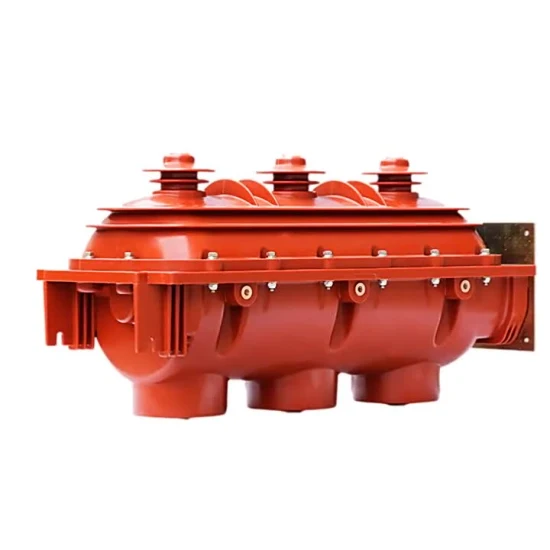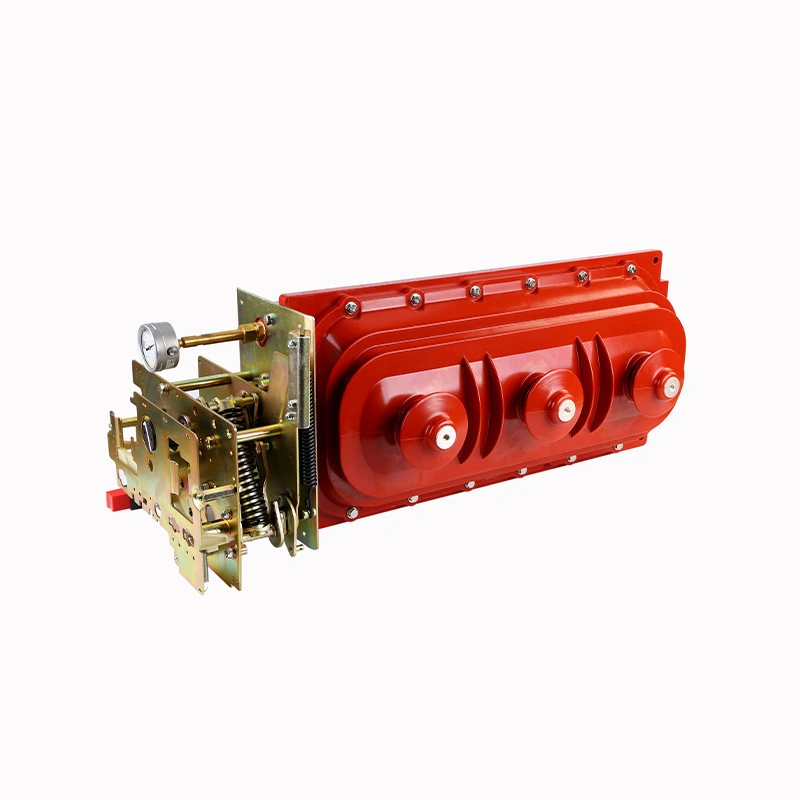
Role, Features, and Applications of SF₆ Load Break Switch
The SF₆ load break switch is a medium- and high-voltage switchgear that utilizes sulfur hexafluoride (SF₆) gas as an arc-extinguishing and insulating medium. It is widely used in ring main units (RMU), compact substations, and gas-insulated switchgear (GIS). Due to its excellent insulation properties, arc-extinguishing capability, and long-term stability, the SF₆ load break switch has become a key component in modern power distribution systems.
1. Main Functions of SF₆ Load Break Switch
(1) High-Performance Insulation for Improved Power System Safety
The insulation performance of SF₆ load break switches far exceeds that of air-insulated or oil-insulated switches. With a dielectric strength 2-3 times higher than air, it effectively prevents phase-to-phase and phase-to-ground short circuits, reducing power grid failures. Therefore, SF₆ load break switches are particularly suitable for high-voltage, high-density power distribution systems, such as urban ring main units, industrial park power supply, and renewable energy power stations.
(2) Excellent Arc-Extinguishing Ability, Reducing Contact Wear
When breaking the current, SF₆ gas absorbs arc energy and forms high-electronegativity gas molecules, effectively cooling and extinguishing the arc. Compared with traditional air or oil arc-extinguishing methods, SF₆ load break switches have significantly lower contact wear and a longer service life, reducing maintenance costs.
(3) Compact Size, Ideal for Space-Constrained Installations
Thanks to the high insulation performance of SF₆ gas, SF₆ load break switches can be designed in a more compact structure, making them smaller than traditional air-insulated switches. They are widely used in space-constrained power distribution environments such as underground substations, wind farms, and small compact substations.
(4) Strong Environmental Adaptability for Harsh Conditions
- Moisture-Resistant and Corrosion-Resistant: The sealed design of SF₆ load break switches prevents external moisture from entering, making them ideal for coastal areas, humid environments, and heavily polluted industrial zones.
- High Altitude Performance: In high-altitude regions, the insulation strength of air decreases, whereas SF₆ load break switches maintain stable insulation performance, making them widely used in western plateau and mountainous power supply systems.
- Low-Temperature Resistance: SF₆ gas retains excellent insulation and arc-extinguishing capabilities in extreme cold environments, making it suitable for power systems in frigid regions.
(5) Maintenance-Free Design, Reducing Operational Costs
Traditional air-insulated or oil-immersed load break switches require regular replacement of arc-extinguishing media, contact cleaning, and mechanical component inspections. In contrast, SF₆ load break switches are virtually maintenance-free, requiring only minor SF₆ gas replenishment after years of operation, significantly lowering grid operation and maintenance costs.

2. Advantages of SF₆ Load Break Switch Compared to Other Types
| Load Break Switch Type | Arc-Extinguishing Medium | Insulation Performance | Maintenance Requirements | Application Scenarios |
|---|---|---|---|---|
| SF₆ Load Break Switch | SF₆ Gas | Very High | Low, Almost Maintenance-Free | Substations, RMU, Renewable Energy |
| Air-Insulated Load Break Switch | Air | Moderate | Requires Regular Maintenance | Low-Voltage Distribution |
| Oil-Immersed Load Break Switch | Transformer Oil | Moderate | Requires Oil Replacement | Traditional Power Grids, Large Industrial Power Distribution |
It is evident that SF₆ load break switches offer superior insulation, arc-extinguishing, low maintenance, and compact design, making them the preferred choice for medium- and high-voltage power distribution networks.
3. Typical Applications of SF₆ Load Break Switch
(1) Urban Ring Main Units (RMU)
In urban power grids, SF₆ load break switches are used in ring main distribution systems to enhance power supply reliability and enable flexible grid management.
(2) Compact Substations
SF₆ load break switches are commonly used in compact substations found in industrial parks, commercial centers, and data centers, where space is a key concern.
(3) Renewable Energy Distribution Systems
SF₆ load break switches are suitable for wind and solar power stations, as their high cold resistance, moisture resistance, and sand resistance ensure stable operation in extreme environments.
(4) Railway, Metro, and High-Speed Rail Power Supply Systems
SF₆ load break switches are deployed in railway and metro substations to ensure stable power supply and prevent failures caused by insulation issues or arc faults.
(5) Ports, Mining, and Petrochemical Industries
In high-humidity, dust-prone, or corrosive gas environments, the sealed SF₆ load break switch remains unaffected by external pollution, ensuring reliable operation.

4. Future Development Trends of SF₆ Load Break Switch
(1) Environmentally Friendly Alternatives
Due to SF₆ gas’s greenhouse effect, the electrical industry is developing new eco-friendly load break switches, such as those using CO₂ or C₄F₇N mixed gases as alternatives. However, at present, SF₆ load break switches remain the most mature and reliable solution.
(2) Smart Grid Integration
Future SF₆ load break switches will incorporate smart monitoring systems and remote control technologies, enabling real-time condition monitoring, fault prediction, and remote operation, enhancing power grid automation.
(3) Modular and Lightweight Design
New-generation SF₆ load break switches will focus on more compact, lightweight, and easy-to-install designs, aligning with the needs of modern power distribution networks.
Conclusion
The SF₆ load break switch, with its outstanding insulation properties, arc-extinguishing performance, compact design, strong environmental adaptability, and low maintenance requirements, is widely used in modern medium- and high-voltage power distribution networks, including ring main units, compact substations, renewable energy distribution, rail transit, and heavy industrial power systems. As the industry moves toward greater automation and sustainability, SF₆ load break switches will continue to evolve, enhancing grid reliability and efficiency while exploring more environmentally friendly alternatives.
